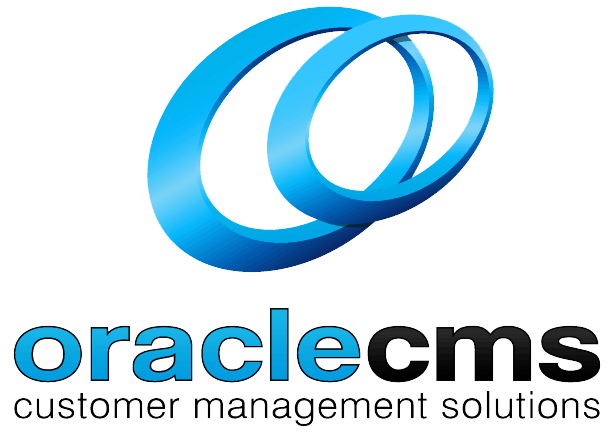
Exploring Software Solutions Used by Virtual Receptionists
In the fast-paced world of modern business, optimizing customer interactions and operational efficiency has become a paramount goal. Enter virtual receptionist software solutions—powerful software tools that addresses both objectives simultaneously. In this article, we will dive into the realm of virtual receptionist software, exploring their intricate features, the benefits they offer, and how they are reshaping the landscape of customer engagement.
Introduction
In an age where seamless customer interactions and streamlined operations are essential, virtual receptionist software solutions stand as a beacon of efficiency and innovation. These solutions offer businesses the ability to enhance interactions while providing uninterrupted, impeccable service.
Understanding Virtual Receptionist Software
Virtual receptionist software is a realm where cutting-edge technology merges harmoniously with the principles of customer service excellence. It encompasses a range of AI-powered tools designed to manage customer interactions, handle inquiries, and facilitate appointment scheduling. These solutions, often indistinguishable from human receptionists, offer real-time responses, enriching the operational fabric of any business.
Key Features of Virtual Receptionist Software
Automated Call Handling
One of the cornerstones of virtual receptionist software is its prowess in automated call handling. This functionality ensures incoming calls are not only answered promptly but also routed intelligently based on the caller’s needs.
Multilingual Support
In a globally connected world, businesses are catering to customers from diverse linguistic backgrounds. Virtual receptionist software comes equipped with multilingual support, enabling interactions to seamlessly unfold in various languages, enhancing accessibility and engagement.
Appointment Scheduling
The ability to schedule appointments efficiently is a hallmark feature of virtual receptionist software. Not only can these solutions manage appointments, but they can also send reminders and oversee the intricacies of booking details, thus minimizing administrative burdens.
Interactive Voice Response (IVR)
Navigating complex call options can be challenging for customers. Virtual receptionist software incorporates Interactive Voice Response (IVR) systems that guide callers through a series of choices, directing them to the appropriate department or information, ultimately elevating call efficiency.
Call Routing and Transfer
Advanced call routing is a facet of virtual receptionist software that minimizes waiting times for customers. It ensures that incoming calls are directed promptly to the appropriate personnel, enhancing the overall experience and issue resolution.
Benefits of Virtual Receptionist Software
Enhanced Customer Experience
The immediate and personalized responses delivered by virtual receptionist software contribute significantly to the enhancement of customer experience. Customers feel valued and attended to, even during non-traditional hours.
Operational Efficiency
Automation is a game-changer for operational efficiency. By reducing manual intervention, businesses can redirect their staff’s efforts toward more valuable tasks, effectively optimizing resource allocation and boosting productivity.
24/7 Availability
Virtual receptionist software solutions do not adhere to traditional office hours. They offer round-the-clock availability, catering to customers in different time zones and transcending geographical boundaries.
Scalability
As businesses grow, so do their demands. Virtual receptionist software solutions are designed to accommodate increased call volumes and interactions, adapting seamlessly to changing needs without compromising quality.
Integration and Compatibility
The interoperability of virtual receptionist software with existing communication platforms, CRM systems, and appointment scheduling tools is a testament to their versatility. This integration optimizes data flow, enhances customer insights, and enriches overall engagement.
Selecting the Right Virtual Receptionist Software
Identifying Business Needs
Selecting suitable virtual receptionist software begins with a thorough understanding of specific business requirements. It involves assessing the needs, goals, and unique aspects of the organization.
User-Friendly Interface
An intuitive user interface is pivotal in ensuring that virtual receptionist software is easily navigable and customizable. It promotes efficient usage by both employees and customers, fostering a seamless experience.
Customization Options
Businesses are not one-size-fits-all entities, and neither should their virtual receptionist software. Customizable scripting and features enable businesses to tailor the software to their brand voice and unique customer interactions.
Analytics and Reporting
An invaluable aspect of virtual receptionist software is its ability to provide insights. Software with analytics and reporting capabilities offers a deep understanding of call volumes, customer interactions, and operational efficiency, informing strategic decisions.
Implementation and Onboarding
Transitioning to virtual receptionist software requires strategic planning and a smooth onboarding process. Successful implementation includes training staff, customizing scripts to align with brand identity, and integrating the software with existing systems.
Future Trends and Innovations
The virtual receptionist software landscape is ever-evolving, and the future holds exciting possibilities. The horizon is dotted with AI advancements, enhanced personalization, and deeper integration with emerging technologies, promising transformative changes in customer engagement.
Addressing Common Misconceptions
As with any technology, virtual receptionist software solutions are not immune to misconceptions. Unveiling and dispelling these misconceptions is crucial for businesses to make informed decisions and harness the full potential of these solutions.
Cost-Benefit Analysis of Virtual Receptionist Software
While the benefits of virtual receptionist software are apparent, a deeper dive into the cost-benefit analysis is essential. Understanding the financial implications, both short-term and long-term, aids in making well-rounded decisions.
Integration Strategies for Virtual Receptionist Software
Virtual receptionist software solutions are most effective when seamlessly integrated into existing systems. Strategies for integration, compatibility considerations, and best practices are pivotal for maximizing the impact of these solutions.
Ensuring Data Security and Privacy
In an era marked by data breaches and privacy concerns, safeguarding customer information is paramount. Virtual receptionist software providers must prioritize data security and privacy compliance to inspire confidence.
Comparing Virtual Receptionist Software Providers
The market for virtual receptionist software is diverse, with various providers offering unique solutions. Businesses need to conduct a thorough comparison of providers, assessing features, pricing, customer support, and track records.
Conclusion
The journey through the world of virtual receptionist software solutions has been a fascinating one. From understanding their nuances to exploring real-world applications and future possibilities, it’s evident that these solutions are not just tools; they are catalysts for enhancing customer engagement and operational excellence.
FAQs
What is virtual receptionist software?
Virtual receptionist software refers to AI-powered tools designed to manage customer interactions, handle inquiries, and facilitate appointment scheduling. These tools emulate human receptionists, providing real-time responses and operational efficiency.
How does virtual receptionist software enhance customer experience?
Virtual receptionist software enhances customer experience through immediate responses, personalized interactions, and 24/7 availability, contributing to a positive and seamless customer journey.
What are the key features of virtual receptionist software?
The key features of virtual receptionist software include automated call handling, multilingual support, appointment scheduling, interactive voice response (IVR), and advanced call routing.
How does virtual receptionist software enhance operational efficiency?
Virtual receptionist software enhances operational efficiency by automating tasks, freeing up staff for more valuable activities, optimizing resource allocation, and increasing overall productivity.
How do you select the right virtual receptionist software?
Selecting the right software involves identifying business needs, evaluating user-friendliness, customization options, analytics capabilities, and ensuring seamless integration with existing systems.


